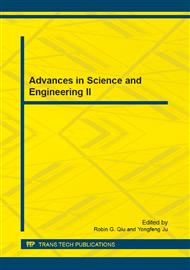p.132
p.140
p.146
p.151
p.155
p.160
p.167
p.171
p.179
A Traffic Control Mechanism Based on Fuzzy Logic
Abstract:
with the rapid development of information technology, the control mechanism of traffic is continuous improved towards automatic and intelligent. Traditional pre-setting control method based on data statistical can not meet the complex needs of the current traffic control. Aiming at this issue, we propose traffic control mechanism based on fuzzy logic. The technology real-time gets the situation of traffic according to a series of fuzzy inference rules that is pre-setting to achieve optimal control of the traffic situation. Experiments show that this method not only can improve the passage efficiency of intersection, but also provide more predicted result as well compared to the network-based control methods.
Info:
Periodical:
Pages:
155-159
Citation:
Online since:
October 2011
Authors:
Keywords:
Price:
Сopyright:
© 2012 Trans Tech Publications Ltd. All Rights Reserved
Share:
Citation:


